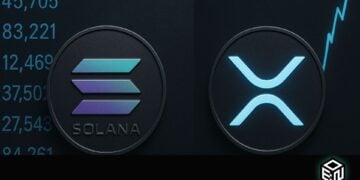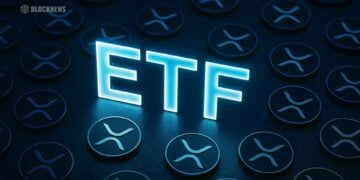- Coinbase launched the Base Network, a layer-2 protocol built on Ethereum, encouraging the development of inflation-pegged flatcoins and other crucial innovations.
- Flatcoins aim to track consumer price index and inflation data, offering users stability in purchasing power amidst economic uncertainty.
- Key areas of focus for the Base Network include developing an on-chain reputation system, an on-chain limit order book (LOB) exchange, and enhancing security in the DeFi ecosystem.
The cryptocurrency market is constantly evolving, and one of the latest innovations comes from the leading crypto exchange, Coinbase. With the launch of their new Base Network, a layer-2 protocol built on Ethereum and powered by Optimism, Coinbase is encouraging developers to construct inflation-pegged “flatcoins” and other crucial decentralized finance innovations.
The Emergence of Inflation-pegged Flatcoins
Most stablecoins in the market are pegged to a reference asset, such as the US dollar, maintaining a stable value amidst the volatility of other cryptocurrencies. However, Coinbase sees an opportunity to create a new type of stablecoin – the flatcoin. Flatcoins aim to be pegged to the “price of living” by tracking consumer price index and inflation data, offering users stability in purchasing power while remaining resilient to economic uncertainty caused by the legacy financial system.
The recent banking crisis has made the development of inflation-tracking stablecoins more critical than ever. Coinbase is particularly interested in flatcoins that provide a middle ground between fiat-pegged stablecoins and volatile cryptocurrencies. This concept has even garnered the support of investor Ray Dalio, who envisions an “inflation-linked coin” to ensure consumers can maintain their buying power.
Building Trust and Safety in Decentralized Finance
Beyond flatcoins, Coinbase has identified three other focus areas for the Base Network. First, the development of an on-chain reputation system is seen as crucial for establishing trust between users in the decentralized finance (DeFi) ecosystem. This could involve implementing a credit score or rank-like system to ensure specific criteria are met before an on-chain identity can interact with DeFi applications. Maintaining user privacy and autonomy, however, remains a priority.
Second, Coinbase believes that an on-chain limit order book (LOB) exchange could serve as a more advanced exchange, executing trades while eliminating counterparty risk through self-custody. By taking this on-chain, the high throughput of the Base Network could offer professional traders and institutions new opportunities for spot trading, limit orders, options, and more, using familiar strategies from the traditional financial system.
Enhancing Security in the DeFi Ecosystem
Lastly, Coinbase is focused on making the DeFi ecosystem safer for users and developers. To achieve this, they aim to enable tools that protect against smart contract code vulnerabilities and protocol logic errors. Self-service security testing tools and more robust auditor services may help mitigate threats, while circuit breakers and incident response systems can provide additional layers of protection.
Coinbase also sees insurance protocols as a “critical backstop” for users in the event of a smart contract exploit. To support the growth of DeFi on the Base Network, Coinbase has launched the Base Ecosystem Fund to help fund early-stage projects building on the platform.
Coinbase’s Base Network represents a significant development in the world of cryptocurrencies, offering new opportunities for inflation-pegged flatcoins and innovations in decentralized finance. By providing a more stable alternative for users seeking to maintain their purchasing power and enhancing the trust, safety, and security of DeFi, the Base Network is poised to become a significant player in the rapidly evolving cryptocurrency landscape.














